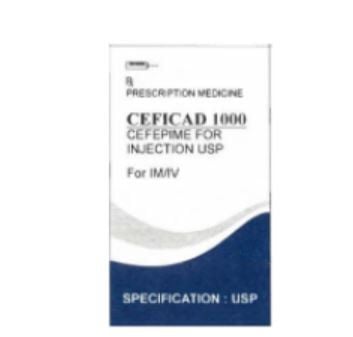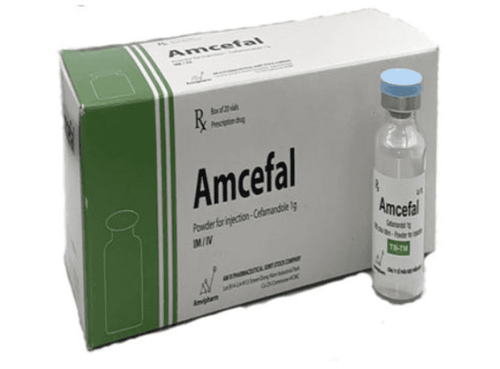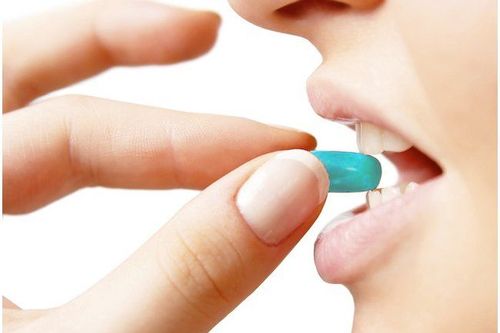This is an automatically translated article.
Pimefast belongs to the group of anti-parasitic, anti-infective, anti-viral, anti-fungal drugs. The main ingredient of Pimefast is Cefepim, which is indicated in the treatment of infections of the lower respiratory tract, urinary tract, skin structure... However, during the use of Pimefast, there may be some side effects such as sadness. vomiting and vomiting, inflammation at the injection site, urticaria... Therefore, before using Pimefast, patients need to learn carefully the information.
1. Mechanism of action of Pimefast
Pimefast drugs include 2 drugs Pimefast 1000 with cefepime 1000mg and Pimefast 2000 with cefepime 2000mg content. Pimefast belongs to the 4th generation betalactamse, cephalosporin family of antibiotics. This compound is antibacterial against sensitive species such as Ecoli, Shigella, Salmonella..., medium sensitive and resistant species such as Listeria, staphylococcus, clostridium...
2. Indications and contraindications of Pimefast
Pimefast is indicated in the treatment of infections of the lower respiratory tract, urinary tract, skin and structures of the skin, abdominal cavity, biliary tract, gynecology or sepsis. In addition, Pimefast is also effective in the treatment of neutropenic fever, meningitis in children with bacterial causes.However, Pimefast is also contraindicated in cases of hypersensitivity to the drug's components or interactions with cephalosporin, enicillin or beta lactam antibiotics groups.
3. Dosage and how to use Pimefast
Pimefast is indicated for use by intravenous injection or deep intramuscular injection.
With intravenous injection, Pimefast can be mixed in distilled water for injection or in other compatible solvents for injection. The volume to be reconstituted before use depends on the type: In a 1-g IM vial, the volume of solvent to be added is 3 mL and the volume after reconstitution is approximately 4.4 mL and the concentration is approximately 240 mg/ml. For the vial of 1g IV, the volume of solvent to be added is 10ml, the volume after reconstitution is approximately 11.4ml and the concentration of Pimefast is 90mg/ml. Reconstituted solutions for intravenous use can be administered directly by slow intravenous injection or by injection into the tubing set of the infusion solution. For intramuscular injection, dilute 1 gram in distilled water for injection or in 0.5% or 1% lidocaine hydrochloride solution. Pimefast is used concurrently with other antibiotics as long as it is not mixed in the same syringe, in the same infusion or injected at the same site. It should be noted: The above recommended Pimefast treatment dose is for reference only. Therefore, before using Pimefast, patients need to follow the doctor's instructions.
4. Side effects when using Pimefast
Pimefast may cause some unwanted side effects during treatment. However, with each case, Pimefast side effects can occur in varying degrees from mild to severe.
Possible treatment-related reported side effects of Pimefast are phlebitis and thrombophlebitis. The common clinical and systemic adverse reactions may all be related to the composition of Pimefast with signs such as pruritus, urticaria, fever, nausea, vomiting, oral thrush, phlebitis, phlebitis, and phlebitis. post-intravenous mass, pain and inflammation at injection site, headache, paresthesia, anaphylaxis, hypotension, vasodilatation, abdominal pain, colitis, pseudomembranous colitis, oral ulceration, edema, arthralgia , confusion, feeling dizzy, convulsions, taste changes, tinnitus, vaginitis, eosinophilia, increased transaminases or increased prothrombin time, ... In some cases, effects may occur. More serious side effects include: Eosinophilia, thrombocytopenia, thrombocytopenia, hypokalemia, transient elevations of serum liver enzymes, and increased renal function parameters. The process of using Pimefast:
For women who are pregnant and nursing, caution should be exercised when using Pimefast. Patients should be advised to use Pimefast from their doctor, and carefully analyze the benefits and risks before using the drug. Pimefast may change how it works and increase its side effects. Therefore, in order to avoid drug interactions with Pimefast, patients should provide their doctor with a list of previously used drugs, including prescription and non-prescription drugs, herbs, ... Using Pimefast should be noted. when the manifestations of allergy to Pimefast drug. At the same time, the patient should notify the doctor so that he can promptly treat the side effects of the drug. Subjects such as kidney failure, children under 2 years old should not use Pimefast. Because it can cause serious health effects. In patients with hepatic impairment, the pharmacokinetics of Pimefast were not changed when used with a single dose of 1 gram. Therefore, there is no need to adjust the dose for this subject. Above is important information about Pimefast, patients should carefully read the instructions for use and use according to the dose prescribed by the doctor to achieve the best effect.













